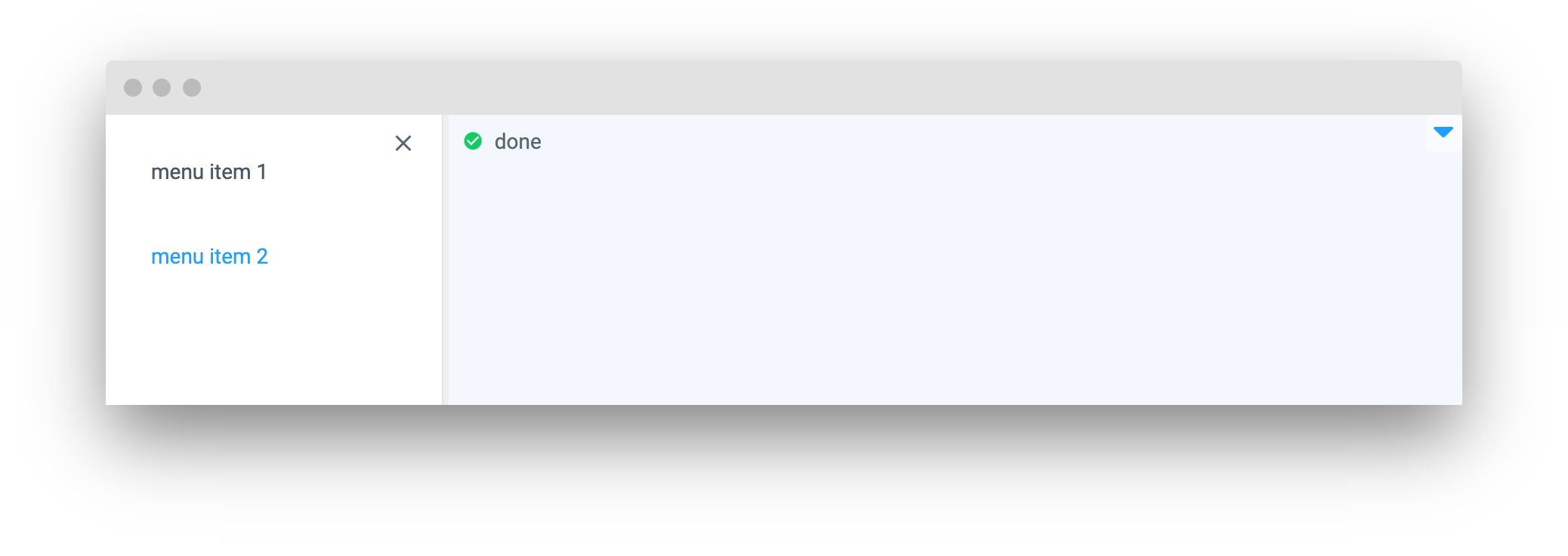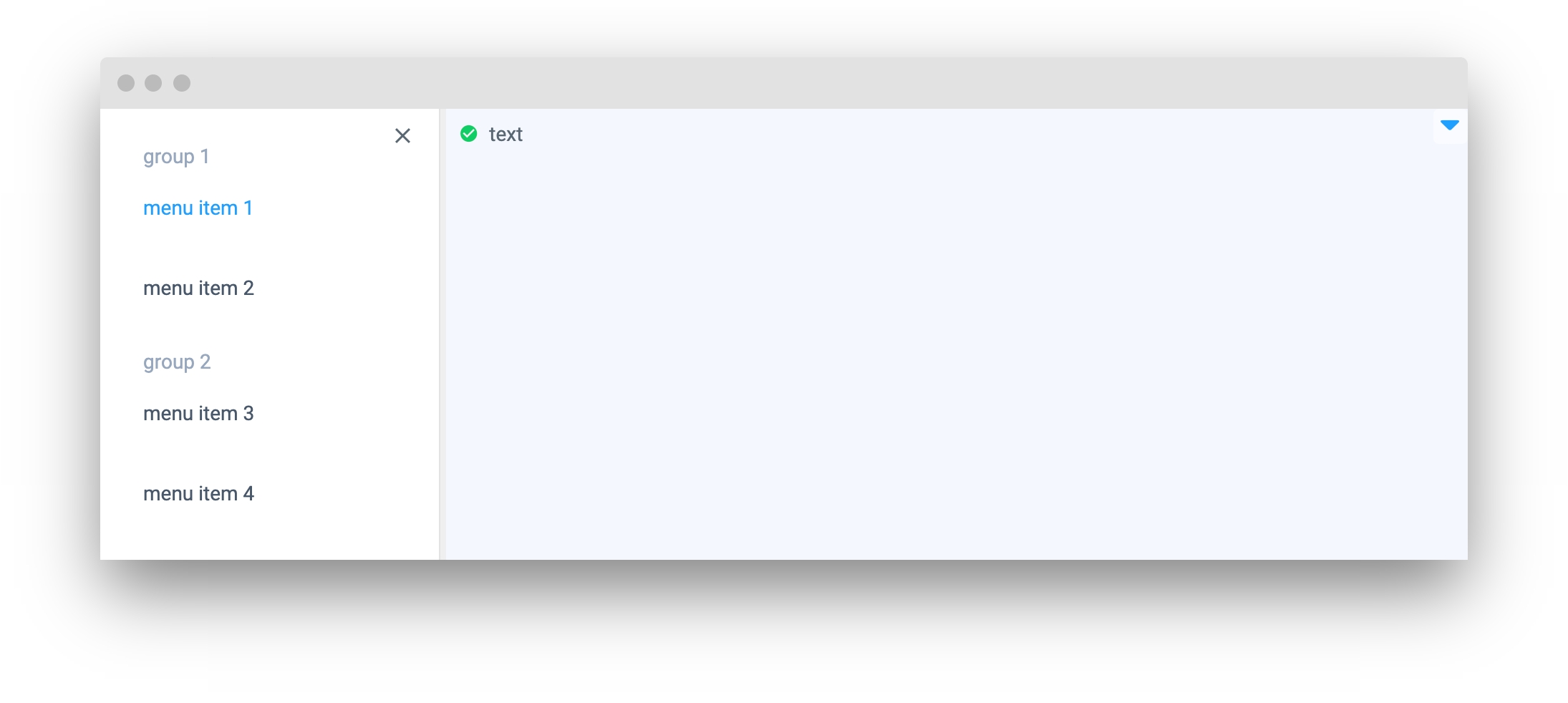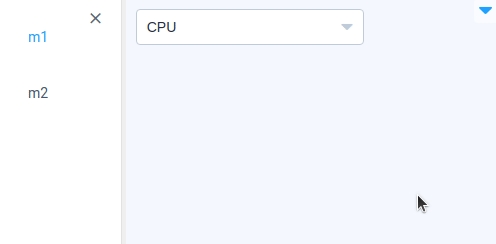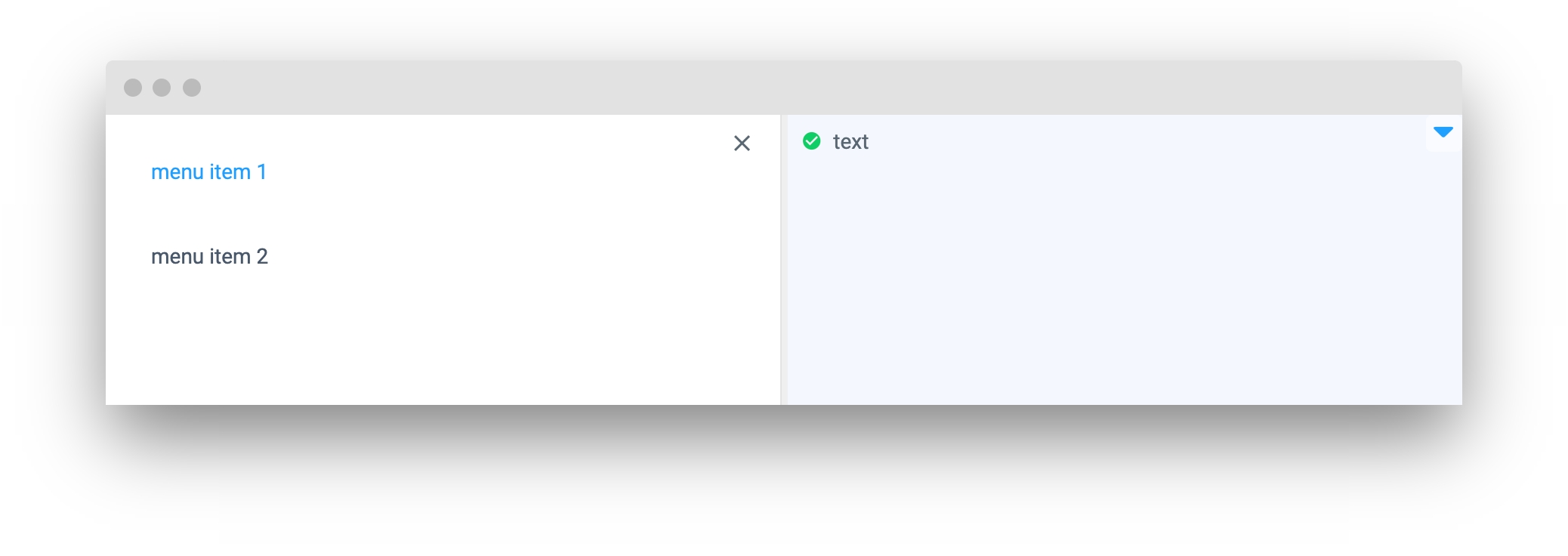Introduction
Menu Menu widget, users can create custom menus that shows different parts and widgets of the app. These menus can be organized by groups.
Function signature
Copy Menu(
items=None,
groups=None,
index=None,
width_percent=25,
widget_id=None,
) Parameters
Parameters
Type
Description
Sets the active Menu at the given index
Width of the left part of Menu in %
items
Determine list of menu Items.
type: List[Menu.Item]
default value: None
Copy text = Text(text="text", status="success")
done_label = DoneLabel("done")
items = [
Menu.Item(title="menu item 1", content=text),
Menu.Item(title="menu item 2", content=done_label),
]
menu = Menu(items=items) groups
Determine list of menu Groups.
type: List[Menu.Group]
default value: None
Copy l = Text(text="left part", status="success")
items = [
Select.Item(label="CPU", value="cpu"),
Select.Item(label="GPU 0", value="cuda:0"),
Select.Item(value="option3"),
]
r = Select(items=items, filterable=True)
g1_items = [
Menu.Item(title="m1", content=r),
Menu.Item(title="m2", content=l),
]
g2_items = [
Menu.Item(title="m3", content=Empty()),
Menu.Item(title="m4"),
]
g1 = Menu.Group("group_1", g1_items)
g2 = Menu.Group("group_2", g2_items)
menu = Menu(groups=[g1, g2]) index
Sets the active Menu at the given index.
type: str
default value: None
Copy text = Text(text="text", status="success")
done_label = DoneLabel("done")
items = [
Menu.Item(title="menu item 1", content=text),
Menu.Item(title="menu item 2", content=done_label),
]
menu = Menu(items=items, index="menu item 2") width_percent
Determines width of the left part of Menu in %.
type: int
default value: 25
Copy text = Text(text="text", status="success")
done_label = DoneLabel("done")
items = [
Menu.Item(title="menu item 1", content=text),
Menu.Item(title="menu item 2", content=done_label),
]
menu = Menu(items=items, width_percent=50) ID of the widget.
type: str
default value: None
Mini App Example
You can find this example in our Github repository:
Import libraries
Copy import os
import supervisely as sly
from dotenv import load_dotenv
from supervisely.app.widgets import Empty, Menu, Select, Text Init API client
First, we load environment variables with credentials and init API for communicating with Supervisely Instance:
Copy load_dotenv("local.env")
load_dotenv(os.path.expanduser("~/supervisely.env"))
api = sly.Api()
Copy text = Text(text="text", status="success")
done_label = DoneLabel("done")
g1_items = [
Menu.Item(title="menu item 1", content=text),
Menu.Item(title="menu item 2", content=done_label),
]
g2_items = [
Menu.Item(title="menu item 3", content=Empty()),
Menu.Item(title="menu item 4"),
]
Copy group_1 = Menu.Group("group 1", g1_items)
group_2 = Menu.Group("group 2", g2_items)
Copy menu = Menu(groups=[group_1, group_2]) Create app using layout
Create an app object with layout parameter.
Copy app = sly.Application(layout=menu) 




